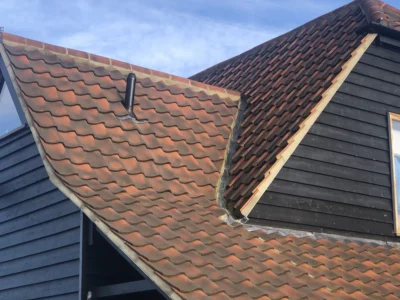Creative Lighting Ideas for your Home Interior
The variety of lighting design and the type of fixtures and fittings that are available for home building projects has undergone a revolution in recent years.
The choice is almost endless with some extremely sophisticated technologies now on offer. Getting the design right and choosing the best products is all about planning at the early stage.
Create a lighting design brief
You need a good understanding of what each of the spaces within your home is going to be used for. With this in mind, you can then set the tone of lighting for your home according to each room’s needs.
If done well, both natural and artificial lighting will accentuate the best features of your home. They can even improve mood and lifestyle.
When we, at Lapd Architects, design a new house or extension, we create a model of the abode in virtual 3D so that our clients can see exactly where the sun is going to be shining at different times of the day in the spaces that are being created.
Read more: Build It’s 3D Home Designer
We then judge the right amount of glazing for that zone. Once we’ve correctly established the building design and internal brightness levels, we are in a better position to determine the right amount of artificial lighting to suit a client’s use of the space.
| Find the perfect finishing touches for your project at Build It Live. Watch live presentations on a variety of self build and renovation topics, browse thousands of products and get your specific questions answered.
Build It Live takes place three times a year in Kent, Oxfordshire and Exeter. The next show will be on 8th and 9th June 2024, in Bicester, Oxfordshire. Claim a pair of free tickets today and start planning your visit. |
As a rule, I always look to achieve strong levels of luminance in living and entertaining areas by using high wattage output lighting, with most of the direct illumination coming from the ceiling.
In spaces where clients want peace, such as in the study and bedrooms, subtle lighting is required. In these cases, it often makes sense to use indirect reflected sources, such as wall lights and uplighters or well-placed task lamps.
Technology exists today to enable you to control all of your lighting from touchscreens. You can even use voice commands with systems like Amazon Alexa to control all the artificial illumination in your house. I remain a fan of using traditional switches though, as this still enables you to create moods and, in the event of an IT meltdown, you’ll be able to see each other at night time.
Using lighting to highlight unique features
I’ve used low-level lighting set into the floor to illuminate some great interior features, such as exposed stone or brick. The light and shadow cast across the uneven textures can be eye-catching and spectacular.
Another key design element that can be accentuated by focused lighting is the staircase. Products set into the wall at the level of the steps can cast a light across the treads and can create a very dramatic effect at night.
In several period properties where we have remodelled and extended the house, we have come across disused wells. Rather than cover these features up, we have instead placed sealed light cables deep into the shaft and covered it at floor level with glass. This becomes a lasting reminder of the heritage of the house and creates a remarkable design feature, too.
A number of our recent schemes have involved installing a large rooflight or lantern. If the glass is not covered, you will see dark sky at night. Smart use of artificial lighting is useful in these areas to help offset any perception of feeling cold in the evening.
Subtle lighting
Basements or rooms in buildings cut into hillsides can prove interesting projects. As there is little natural light available, you need to be creative. If you’re installing a home cinema, you won’t want any natural illumination. Instead, you’ll need very low levels of luminance in discreet locations.
The design of hidden fittings located in recesses at the edge of a ceiling plane, or the use of lighting coving or a dropped pelmet, can create very dramatic effects, especially if you control these with a dimmer switch. It also produces a sense of floating light without any direct glare and this suits these types of spaces well.

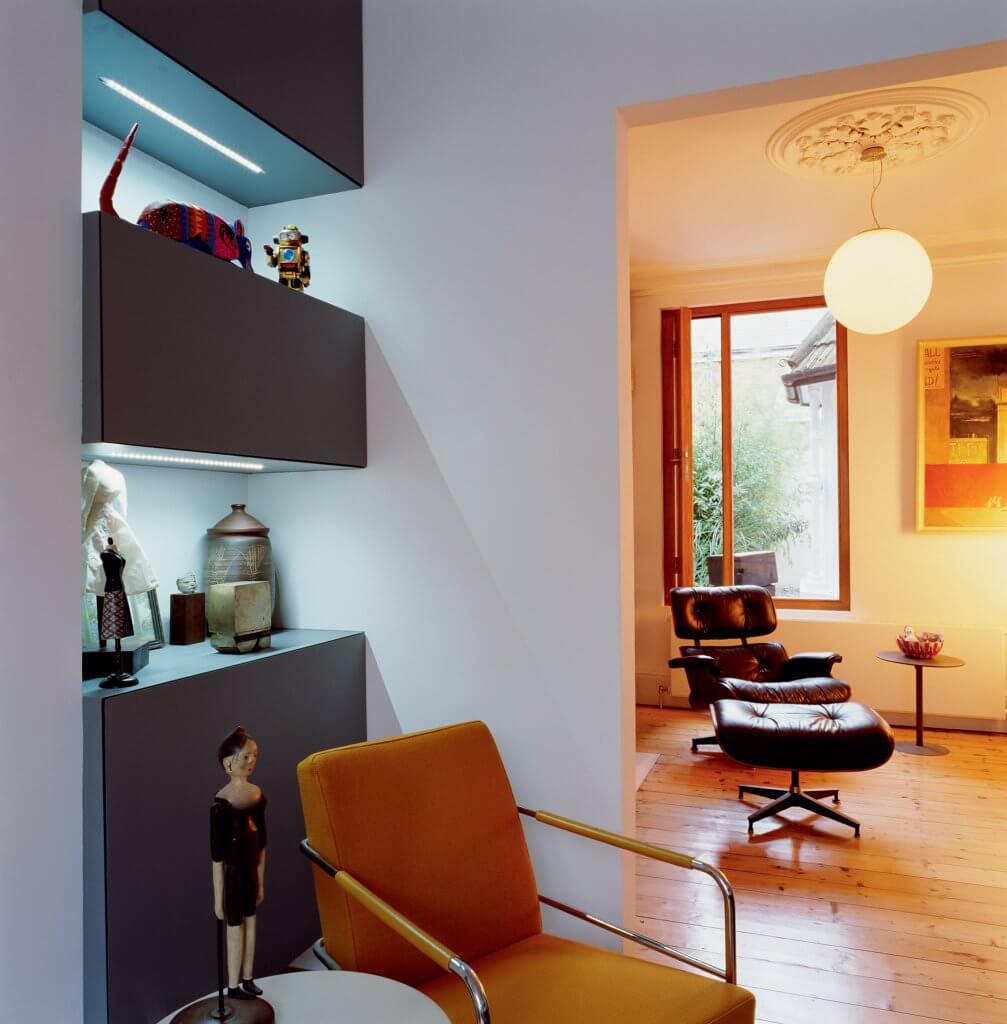
Hiding fittings in recesses is a great idea for shelving, where spotlights can cast pools of artificial illumination onto units that proudly display a particular artefact, picture or certificate. If you are considering a basement pool, then the above approach can be used. The floating ceiling plane, with light coming from an invisible source, can almost feel as though it’s being borrowed directly from outside – even though you are well below ground level.
Flexible lighting design
Electric illumination can be used to make a space feel bigger or smaller. One appealing option is to fit easily controlled switched banks of lights, which can blend the level and number of fittings that are on or off.
Up until a few years ago, hired-wired automated lighting was all the rage. This required connecting each bulb back to a control panel which, at a push of a button, would set your lights for you. As a result it involved a lot of wiring, which makes it a relatively expensive solution in 2017. Today, cost effective wireless LED systems can control and blend your lighting via an app on your phone.
To make rooms seem bigger, consider using reflective materials such as tiled floors and mirrors to bounce light around your home’s internal spaces. You may want to pick out a specific piece of art or sculpture to draw the eye through a space, making it feel larger.
This has worked successfully in projects where we’ve created an open-plan entertaining space and have used lighting in the trees just outside the windows, so that occupants’ gaze is directed to the outside. Because the ground is not visible, it feels as though the trees are a back-drop to the entertaining zone. The reverse of this can also be applied.
Pendant lights on dimmers above a dining table cast just enough illumination to hold conversations by and, with everything else around you darkened, create a cosy setting. Look out for designs with elaborate pulley systems which can adjusted to suit the occasion for added interest.
Choose the right lighting style
It’s vital to select fittings that match the atmosphere you want to create – after all, they are likely to become a big influence in informing your project’s design. Installing a suspended ceiling grid may not create the cosiest of vibes, for instance, but it might be entirely appropriate for your home office.
If you want to make a dramatic statement, consider a feature light such as a chandelier to produce a real focal point in the entrance or main living spaces. Use of spotlights is very popular, too, and the choice of colour for the bulb and surround is a key consideration.

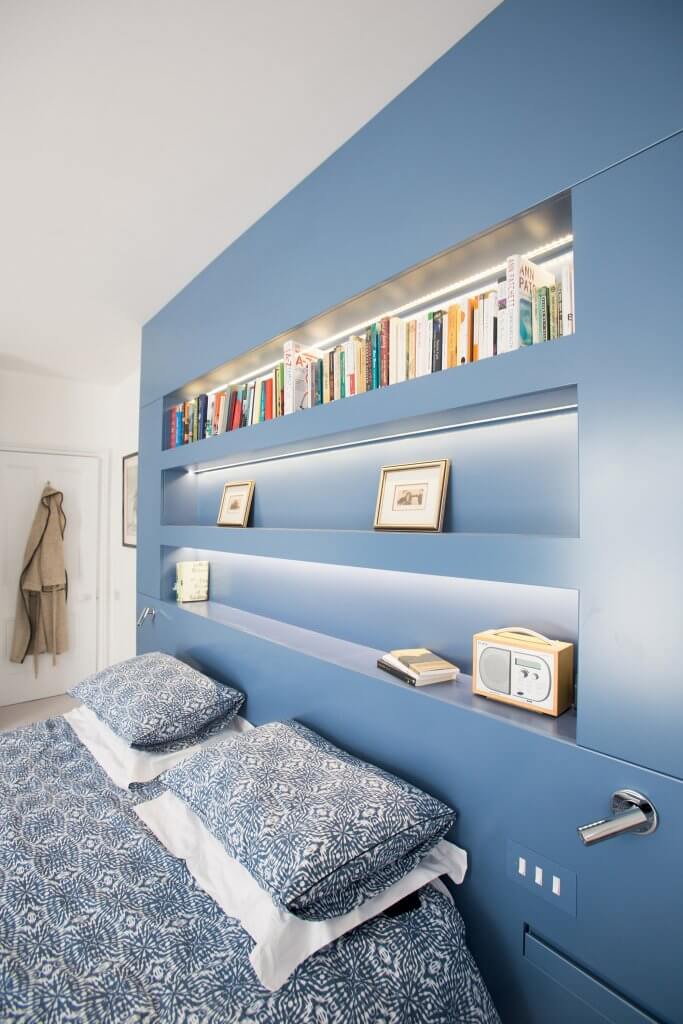
LEDs used to be criticised for producing very cold rendering (how the light makes everything else around it appear). The lamps also took a long time to reach full brightness. The performance of LED lighting today is much improved and creates better colours, which makes it the obvious choice for new illumination schemes.
Older style tungsten lamps have been outlawed because of their energy inefficiency. Yet the look of these bulbs has had a resurgence in popularity recently with many traditional-style bare LED bulbs providing an attractive retro look.
Practical lighting
You will need high levels of illumination for specific tasks. For example, strip lighting under cabinets in kitchens is very effective for washing brightness over worktop and preparation areas. Meanwhile, artists working from home often want to use daylight bulbs that give a better colouring to view artwork. They are also very good for lifting moods, so great for those who suffer from SAD syndrome.
Directional spotlights, and even lamps with lenses that can be focused from broad to narrow beams, are available for domestic use where you may want to highlight a particular feature within your home.
When lower levels of focused illumination are needed for reading in bed or in a favourite armchair, for example, a decent table lamp or uplighter will work well. I like to
build in lamp options to either side of a bed so that you can read without disturbing your partner.
Outdoor lighting
External illumination is important for safety, security and aesthetics. Brightening up otherwise dark areas, such as your driveway and the path from car park to your home’s entrance (especially if there are steps) is important to ensure nobody slips or falls at night. Low-level lighting or downlight bollards are very useful in this instance.
Uplighters to wash walls are impressive and many landmark buildings are lit in this way. It is important to illuminate your entrance area well, too. Light within the hallway shining through glazed elements of your front door will create a welcoming and impressive effect. If you want to accentuate an indoor/outdoor entertaining zone, don’t forget to install lighting in your patio areas. Flush brightness on garden features, too, such as outdoor ponds.
Where you are in a listed building or conservation area, the use of external illumination may be resisted by the local planning authority. Check this aspect with your planning officer first, as many prefer no light around houses.
Lighting costs and keeping to budget
I’ve seen quite an increase in the electrical elements of tenders in my projects recently. A growing demand for connectivity and a surge in the number of gadgets we have is partly behind this, as is the sophistication that is now available to everyone in lighting.
Some clients are happy to spend as much on a wow-factor fitting as others do on their entire kitchen. Select your lighting design and fittings wisely and consider alternative ways to get the same look that you’ve seen in that magazine article.
Technology in lighting is moving very fast so consider future proofing your bulbs and fittings. The early low-energy lamps from only a few years ago were meant to last for many years, however the colour rendering was very poor. I expect that many of these long-life bulbs have already been changed as technology has improved.
Energy usage
The advent of light bulbs that are considerably more efficient has coincided with more fittings being used in a house. So I would guess the net energy usage has remained the same or even increased.
If you want to be sustainable, bear in mind that pared-back designs are likely to require less energy to run. So consider basic switches rather than hi-tech alternatives, and think about the number of fitting you actually require to achieve a good result rather than overspecifying for the sake of it.
Use dimmer switches so that the same light can provide different levels of illumination to suit the mood you want to create. You could also aim to include a switch that controls everything from one location, so that when you are the last one to go to bed, you’re not traipsing around the rooms to switch everything off.
If budget allows, there are very clever bits of kit that detect movement (or lack of it) so that after a period of time, the light will switch itself off.
Top image: In order to emphasise the splashback and kitchen island There’s Light installed a fully dimmable linear LED in this scheme.


































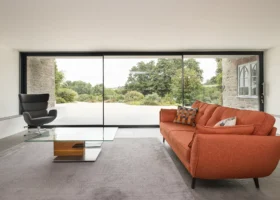





























































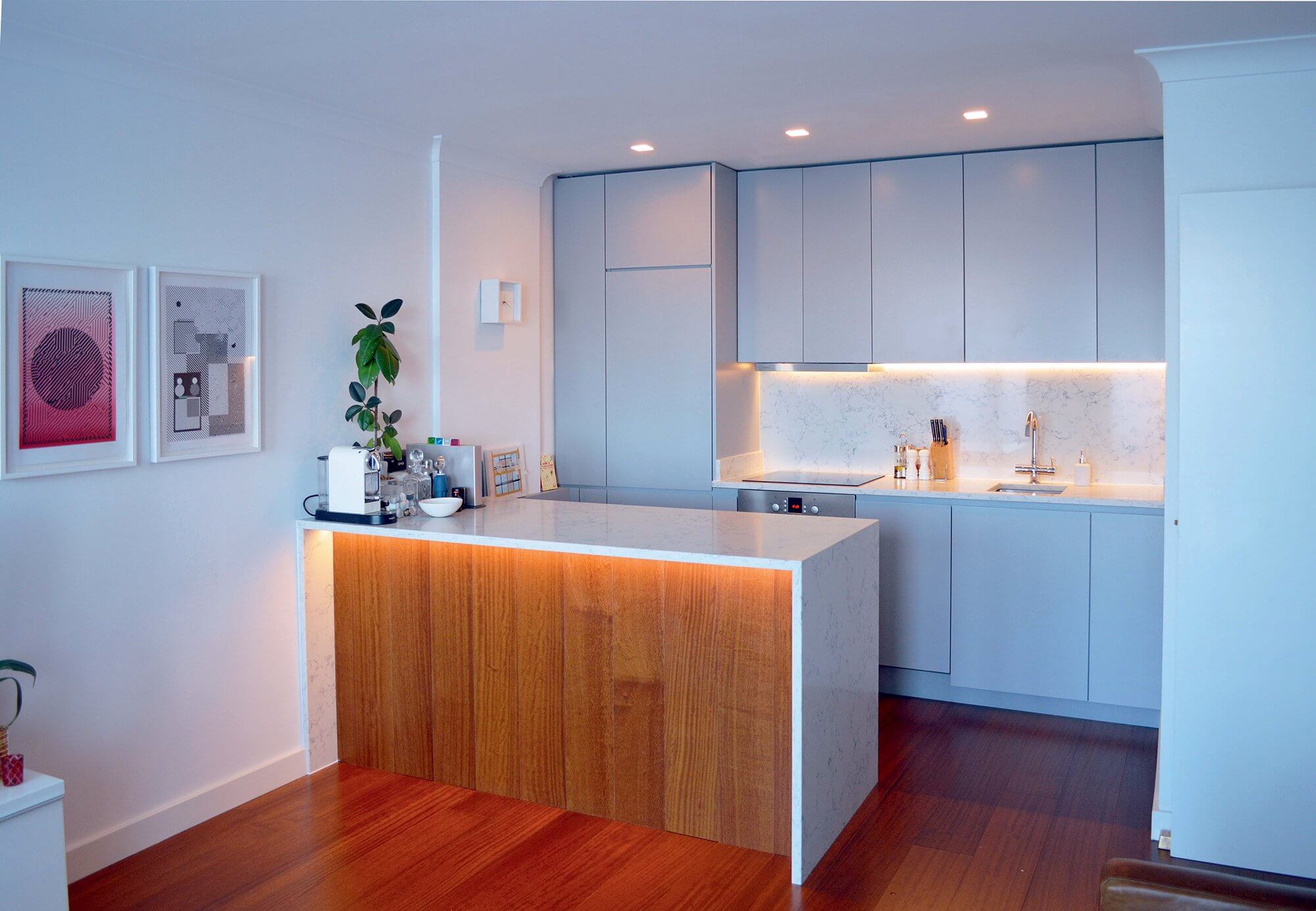
 Login/register to save Article for later
Login/register to save Article for later






